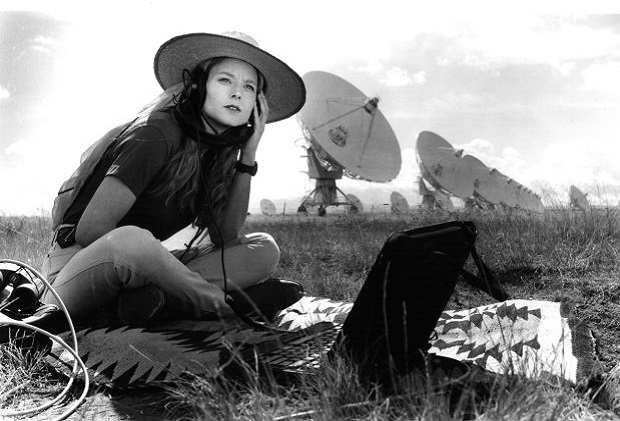Mars
Continuing towards the exit, to the right is an area devoted to the exploration of Mars, which plays a very important role in COSMOS, as well as in Carl Sagan’s career as a scientist. His research career is less well known to the general public than his work as an educator, but he also made important contributions to the development of planetary exploration. Upon his death in 1996, NASA renamed the Pathfinder robot on Mars as the Sagan Memorial Station.
Displayed in this area are some of the first photos taken in 1976 by the Viking 1 probe from the surface of the red planet. At the time, colour printers didn’t exist. These photos, on loan from Jon Lomberg, are some of the originals developed in the darkroom4 of the Control Centre at JPL. They are signed by the scientists who worked on them, including Sagan himself. Also featured is technical documentation which includes studies of landing sites along with the landing uncertainty areas (elliptical), and letters between the members of the mission team and Jon Lomberg himself who, at Sagan’s request, designed the first logo for the Viking Missions.
In COSMOS, Carl Sagan described the experience of seeing those photos for the first time.
‘I remember being transfixed by the first lander image to show the horizon of Mars. This was not an alien world, I thought. I knew places like it in Colorado and Arizona and Nevada. There were piles of rocks and sand, and something sticking out in the distance, everything was so natural and spontaneous, like any landscape on Earth. Mars was a place. I would, of course, have been surprised to see a grizzled prospector emerge from behind a dune leading his mule, but at the same time the idea seemed appropriate. Nothing remotely like it ever entered my mind in all the hours I spent examining the Venera 9 and 10 images of the Venus surface. One way or another, I knew, this was a world to which we would return.’5
The Phoenix Mission landed on Mars in 2007. It took with it recordings of greetings from Carl Sagan and Arthur C. Clarke amongst others, for the red planet’s future colonisers. These greetings can be heard on the screen.
Mars is trending once again. This year provides an optimal launch window, the most favourable in the past eighteen years. That’s why, together with the huge scientific interest in the red planet, a large number of missions have been launched by several different countries. Today, we know that back in the beginnings of the solar system, Mars was a hospitable planet, with a denser atmosphere as well as rivers and oceans of liquid water. Researching the possibility that it may once have harboured life, and may even still retain some residual level of microbiology, is one of the great aims of these new missions to Mars.
